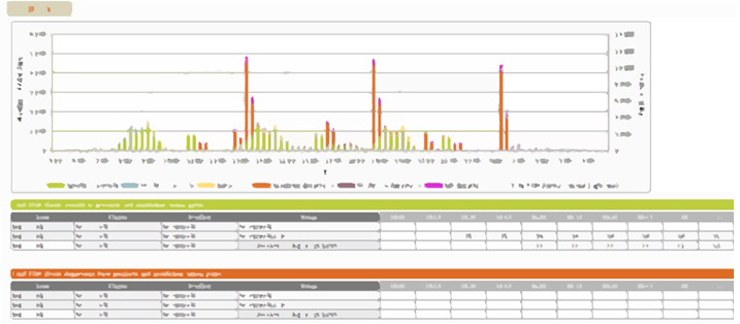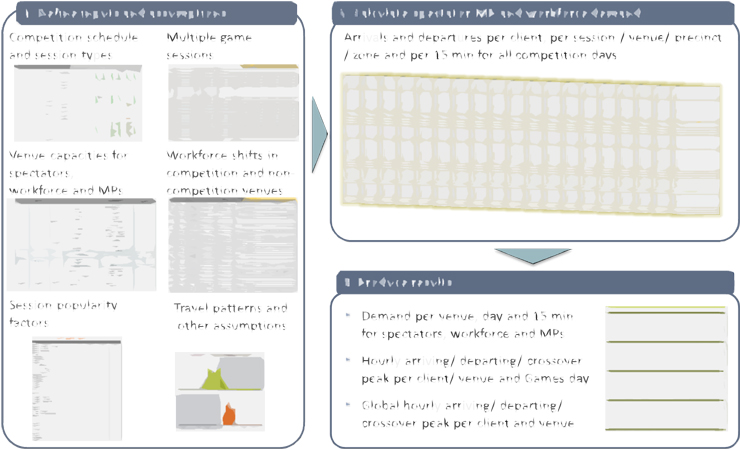Developing a sophisticated demand model for event generated movements

While planning transport operations for multi-sport events, host cities are typically developing special models for the event generated demand (spectators, workforce and other clients). Such models may provide input for the strategic transport model that the host cities run to support decision making in such occassions. They also provide critical information for the expected event generated pedestrian volumes in the vicinity of venues and public transport hubs.
M-Prime has developed such complex demand models in many instances, including a recent summer multi-sport event.
The way to problem solvingM-Prime developed a sophisticated model that analysed the demand generated by every event session in competition venues and also due to the operations of accommodation areas, media facilities and live sites. The key model drivers included:
- the event schedule and the session types
- seating capacities per venue, sport and session
- workforce population per shift per venue
- session popularity factors
- arrival and departure patterns customised for each venue/ precinct and for morning, afternoon and evening sessions
- workforce shifts in competition and non-competition venues

Our model estimates spectator, sponsor and workforce arrivals and departures per
ImpactOur demand model was provided to the client in a user friendly mode. This allows the users to easily test what-if scenarios by modifying any parameter, such as venue capacities, event schedule and behavioural patterns. The users may:
- generate desired outputs, i.e. select, compute, review the demand estimates for a specified venue/ precinct/ zone per day and 15 minutes
- isolate critical hourly arriving/ departing/ crossover peak periods for selected clients, venues, event days
- extract all forecasted demand data in an excel spreadsheet.
The demand estimates of our model for the summer multi-sport event, were also used for sizing critical infrastructure elements, such as temporary bridges and stairs, and for operational planning.
Back
